If you’re taking apixaban, you probably wonder how this blood‑thinner fits into everyday life. The good news is that with a few practical adjustments you can stay active, eat well, and travel confidently while keeping your risk of unwanted bleeding low.
Key Takeaways
- Apixaban works by blocking Factor Xa, not by affecting Vitamin K.
- Consistent dosing time and a regular routine are more important than any specific diet.
- Stay hydrated, watch alcohol intake, and avoid high‑impact sports unless cleared by your clinician.
- Kidney function influences dosing; regular labs are essential.
- Know the signs of serious bleeding and have an action plan.
Understanding Apixaban
Apixaban is a direct oral anticoagulant (DOAC) that selectively inhibits Factor Xa, a key protein in the blood‑clotting cascade. Unlike older anticoagulants such as warfarin, it does not require routine INR monitoring and has fewer food interactions.
Direct oral anticoagulant refers to a class of pills taken by mouth that target specific clotting factors. They are favored for their predictable effect and fewer dietary restrictions.
Factor Xa inhibitor describes any drug that blocks the activity of Factor Xa, preventing the conversion of prothrombin to thrombin and ultimately reducing clot formation.
How Apixaban Affects Your Body
Apixaban reaches its peak concentration about 3‑4 hours after ingestion and stays in the bloodstream for roughly 12 hours. This half‑life means you’ll usually take it twice daily. Because the drug is cleared partly by the kidneys, impaired renal function can raise drug levels and increase bleeding risk.
Unlike warfarin, which interferes with Vitamin K‑dependent clotting factors, apixaban does not alter Vitamin K pathways. This makes it a safer choice for people who struggle to keep a steady intake of leafy greens.
Diet & Nutrition
There’s no need to avoid all green vegetables, but keep your intake of Vitamin K‑rich foods (spinach, kale, broccoli) relatively stable day to day. Sudden spikes won’t affect apixaban, but large fluctuations can confuse clinicians monitoring your labs.
Alcohol should be consumed in moderation. One to two standard drinks per day are generally acceptable, but heavy drinking can increase bleeding risk and impair liver function, which also helps clear the drug.
For those on a low‑sodium diet, apixaban poses no extra sodium load. However, if you’re on a high‑protein regimen (e.g., bodybuilding), know that excess protein doesn’t impact the drug’s metabolism.
Vitamin K is a fat‑soluble vitamin essential for clotting factor synthesis. While apixaban bypasses this pathway, maintaining a consistent Vitamin K intake helps keep other health parameters stable.
Exercise & Physical Activity
Staying active is crucial for cardiovascular health, but certain sports carry higher bleeding risk. Moderate activities-walking, swimming, yoga, stationary cycling-are safe for most patients.
Contact sports (soccer, basketball, martial arts) or activities with a high fall risk (skiing, mountain biking) should be discussed with your healthcare provider. If cleared, wear protective gear and consider a medical alert bracelet.
Strength training is fine as long as you avoid heavy lifting that could cause strain or injury. Aim for controlled movements and use spotters when needed.
Travel and Special Situations
When crossing time zones, keep dosing times consistent with your home schedule. Use a phone alarm or a pill organizer that marks AM/PM doses.
Flying poses no extra risk, but stay hydrated-dehydration can concentrate blood and increase clotting propensity. Carry a small bottle of water and avoid excessive caffeine.
If you’re traveling abroad, bring a copy of your prescription, the medication in its original packaging, and a letter from your doctor describing the indication. Some countries have strict regulations on anticoagulants.
Managing Interactions and Other Medications
Apixaban can interact with strong CYP3A4 or P‑glycoprotein inhibitors (e.g., ketoconazole, clarithromycin) and inducers (e.g., rifampin, phenytoin). Always inform your pharmacist when starting a new prescription or over‑the‑counter product.
Common non‑prescription meds to watch:
- Non‑steroidal anti‑inflammatory drugs (NSAIDs) - increase bleeding risk.
- Acetaminophen - generally safe at ≤2 g per day, but higher doses may tip the balance.
- Herbal supplements like ginkgo, garlic, and high‑dose vitamin E - can also raise bleeding tendency.
Warfarin is a vitamin K antagonist that has been used for decades to prevent clots. It requires regular INR checks and is highly sensitive to dietary Vitamin K changes.
Unlike warfarin, apixaban does not need routine lab monitoring, but periodic kidney and liver panels are advised, especially in older adults.
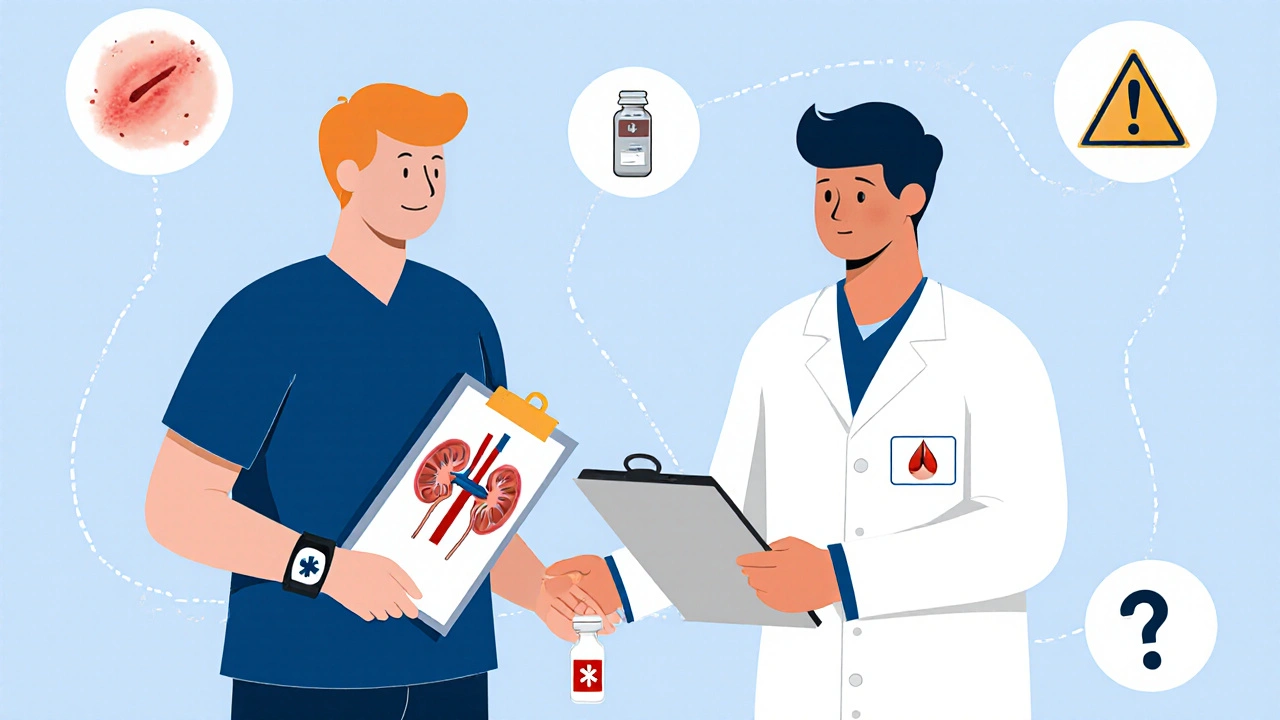
Monitoring and When to Seek Help
Even though routine blood tests aren’t required, your doctor will likely order a baseline kidney function test (eGFR) and repeat it annually or sooner if you have chronic kidney disease.
Bleeding risk is a central concern with any anticoagulant. Signs of a serious bleed include:
- Unexplained bruising or large petechiae.
- Blood in urine or stool (black/tarry stools).
- Prolonged nosebleeds, gum bleeding, or heavy menstrual bleeding.
- Sudden severe headache, dizziness, or weakness (possible intracranial bleed).
If any of these occur, seek medical attention immediately and let the emergency team know you are on apixaban.
For minor cuts, apply firm pressure for 10‑15 minutes; most small bleeds resolve without intervention.
Comparison of Common Anticoagulants
| Feature | Apixaban | Warfarin | Rivaroxaban | Dabigatran |
|---|---|---|---|---|
| Class | Factor Xa inhibitor (DOAC) | Vitamin K antagonist | Factor Xa inhibitor (DOAC) | Direct thrombin inhibitor (DOAC) |
| Dosing frequency | Twice daily | Once daily (adjusted by INR) | Once daily | Twice daily |
| Monitoring | Renal & liver labs (periodic) | Regular INR checks | Renal labs (periodic) | Renal labs (periodic) |
| Food interactions | Minimal | High (Vitamin K) | Low | Low |
| Reversal agent | Andexanet alfa (available) | Vitamin K + PCC | Andexanet alfa | Idarucizumab |
| Renal dose adjustment | Yes (eGFR <30 mL/min) | No | Yes (eGFR <15 mL/min) | Yes (eGFR <30 mL/min) |
Frequently Asked Questions
Can I take apixaban with aspirin?
Low‑dose aspirin (81 mg) is sometimes prescribed together for patients with certain heart conditions, but the combination raises bleeding risk. Talk to your doctor before adding any aspirin.
Do I need to skip apixaban before surgery?
Most minor procedures (dental cleaning, cataract surgery) can be done without stopping the drug. For major surgery, doctors usually hold apixaban 24‑48 hours beforehand, depending on kidney function.
Is it safe to travel internationally with apixaban?
Yes, as long as you keep the medication in its original packaging, carry a doctor’s note, and maintain your dosing schedule across time zones.
What foods should I avoid?
There are no strict food bans, but keep high‑vitamin K foods (leafy greens) at a steady level and limit alcohol to moderate amounts.
How often should I get blood tests?
Baseline kidney and liver panels before starting, then annually or sooner if you have chronic kidney disease, liver disease, or change other medications.
Living with apixaban doesn’t mean giving up the things you love-it just calls for a few smart tweaks. By staying informed, tracking your labs, and listening to your body, you can enjoy a balanced, active lifestyle while keeping your clot‑prevention therapy on point.

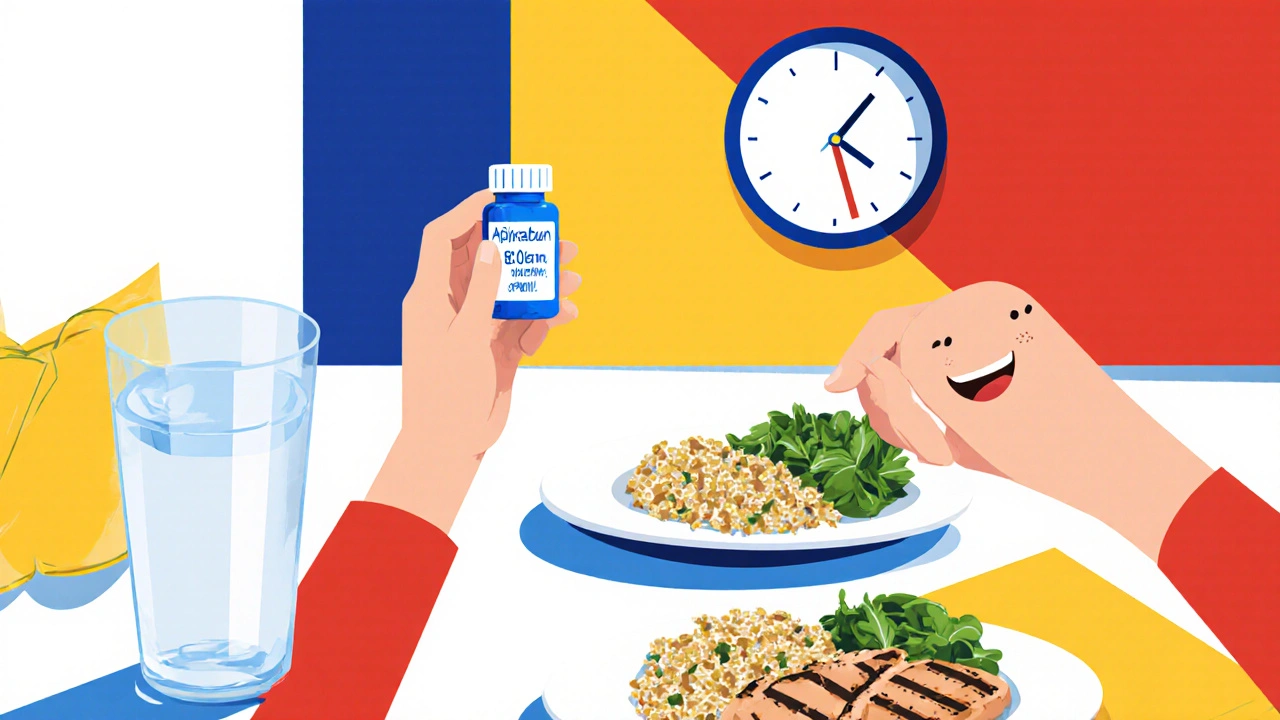
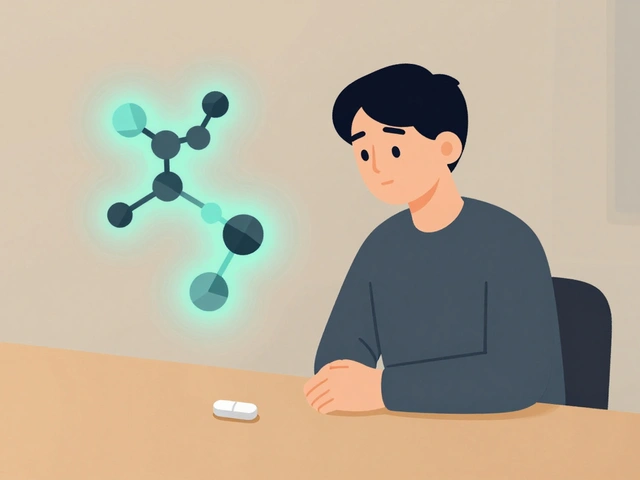
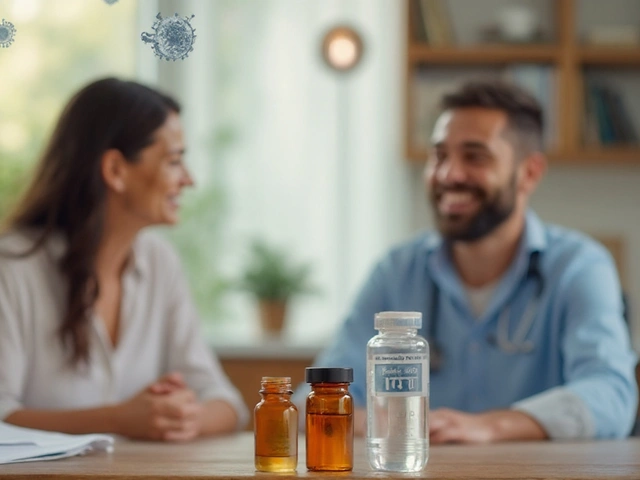


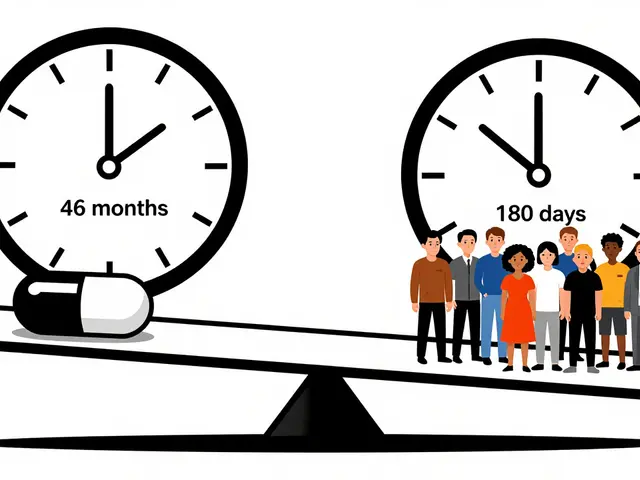
Angela Koulouris
October 21, 2025 AT 14:40Hey there, fellow apixaban traveler! 🌟 Staying consistent with your dose time is like keeping a steady beat in a song – it just feels right. Keep your Vitamin K intake steady; you don’t have to ditch the greens, just avoid sudden spikes. Hydration is your silent sidekick, especially on long flights, so sip water like it’s your favorite cocktail. Light‑to‑moderate exercise such as walking, yoga, or swimming keeps the heart happy without raising bleeding alarms. And remember, a medical alert bracelet can be a quiet guardian when you’re out on the town.
Harry Bhullar
October 28, 2025 AT 12:20Building on what Angela mentioned, let me dive a little deeper into the pharmacokinetics and practical lifestyle integration of apixaban. First, the twice‑daily dosing aligns with its ~12‑hour half‑life, which means you’re maintaining relatively stable plasma concentrations, reducing peaks that could predispose to bleeding. When you set a consistent alarm, you’re essentially flattening the pharmacodynamic curve, which is particularly beneficial for patients with fluctuating renal clearance. Speaking of kidneys, always have your eGFR checked at least annually; if you fall below 30 mL/min you’ll need dose adjustment and heightened vigilance for any bruising or unexpected hematuria.
Dietary vitamin K, while not directly interacting, can still influence overall coagulation status, so a stable intake of leafy vegetables avoids unnecessary clinician confusion during lab reviews. As for alcohol, the literature points to a dose‑response relationship: one to two standard drinks is typically safe, but binge patterns can impair hepatic metabolism of CYP3A4 substrates, indirectly raising apixaban levels.
Exercise wise, the key is to avoid high‑impact or contact sports unless you have clearance – not because apixaban makes you fragile, but because trauma raises the probability of a bleed that’s harder to control. Strength training is fine, just keep loads moderate and use proper form; don’t attempt a one‑rep max without a spotter.
Travel tip: when crossing time zones, anchor your dosing schedule to your home timezone rather than the local time, then gradually shift the alarm over a couple of days. Also, pack a copy of your prescription and a brief doctor’s letter; some customs agents can be surprisingly meticulous about anticoagulants.
Lastly, keep a small bleed‑control kit – gauze, a blood pressure cuff, and a list of emergency contacts – in your bag. You’ll feel empowered, and you’ll be ready if a minor cut decides to linger longer than usual.
Dana Yonce
November 4, 2025 AT 11:00Just a quick reminder: stay hydrated and take your meds at the same time each day :)
Lolita Gaela
November 11, 2025 AT 09:40From a mechanistic standpoint, apixaban’s selective inhibition of Factor Xa circumvents the vitamin K‑dependent gamma‑carboxylation pathway, thereby minimizing dietary interaction risk. Nonetheless, clinicians often advise maintaining a steady intake of dietary vitamin K to avoid confounding variables when interpreting renal labs. Pharmacodynamically, the drug exhibits a predictable dose‑response curve, which is why routine INR monitoring is obsolete compared to warfarin. However, beware of concomitant strong CYP3A4 inhibitors (e.g., ketoconazole) that can elevate plasma concentrations and augment hemorrhagic potential. In contrast, moderate CYP3A4 inducers (e.g., rifampin) may reduce efficacy, necessitating dose recalibration. For patients on polypharmacy regimens, a comprehensive med‑review is indispensable to preempt adverse drug‑drug interactions.
Giusto Madison
November 18, 2025 AT 08:20Listen up, folks – if you think you can just wing it with apixaban, you’re kidding yourself. Stay on top of your dosing schedule like your life depends on it, because it actually does. No more "I forgot" excuses; set alarms, use pill boxes, whatever it takes. And don’t even think about diving into extreme sports without clearance – the risk of a catastrophic bleed is real. Hydration isn’t optional; dehydration concentrates your blood and negates the drug’s safety profile. If you’re on any new meds, check for CYP3A4 interactions immediately – ignorance is not bliss here. Bottom line: treat this medication with the respect it deserves, or you’ll pay the price.
Rachel Valderrama
November 25, 2025 AT 07:00Oh great, another “stay hydrated” reminder, because I’m totally not drinking water already.
Chirag Muthoo
December 2, 2025 AT 05:40Dear community, I would like to emphasize the importance of adherence to prescribed dosing intervals for apixaban. Maintaining a consistent schedule not only optimizes therapeutic efficacy but also minimizes the potential for pharmacokinetic variability. It is advisable to utilize reminder systems, such as smartphone alerts, to ensure punctual administration. Additionally, regular monitoring of renal function, particularly in patients with comorbidities, remains paramount. Thank you for your attention to these recommendations.
Jasmina Redzepovic
December 9, 2025 AT 04:20Let me set the record straight: anyone who thinks apixaban is “just a pill” is clearly uninformed. This drug is a cutting‑edge Factor Xa inhibitor, and you need to respect its pharmacology. Forget the myth that you can binge on alcohol – the hepatic metabolism will get overloaded and your bleed risk spikes dramatically. And don’t even mention “I’m fine without checking labs” – that’s a dangerous attitude that only endangers you and the healthcare system. If you truly understand the science, you’ll follow the guidelines, not make up your own. Stay vigilant, stay educated, and stop spreading half‑truths.
Eli Soler Caralt
December 16, 2025 AT 03:00Ah, the existential dance of anticoagulation, where each dose is a whispered promise to the cosmos. 🌌 One might muse that the rhythm of apixaban mirrors the tide – ever‑present, yet unseen, shaping the shore of our mortal vessels. Yet, we must not merely float; we must steer with intention, lest the sea of bleed become a tempest. 💫 Remember, the green leaves are not adversaries but silent partners in this grand ballet. 🌿 Stay hydrated, keep your schedule, and perhaps, in the quiet moments, you’ll hear the hum of health echoing through the void. 😊
Eryn Wells
December 23, 2025 AT 01:40Hey everyone! 🌍 Let’s celebrate the diverse ways we manage apixaban across cultures – from the classic pillbox to family‑shared reminders. 🗓️ No matter where you’re from, staying consistent is the universal key. 👏 And don’t forget to share your favorite healthy snack that pairs well with your medication routine – it’s a great way to build community! 🎉💙